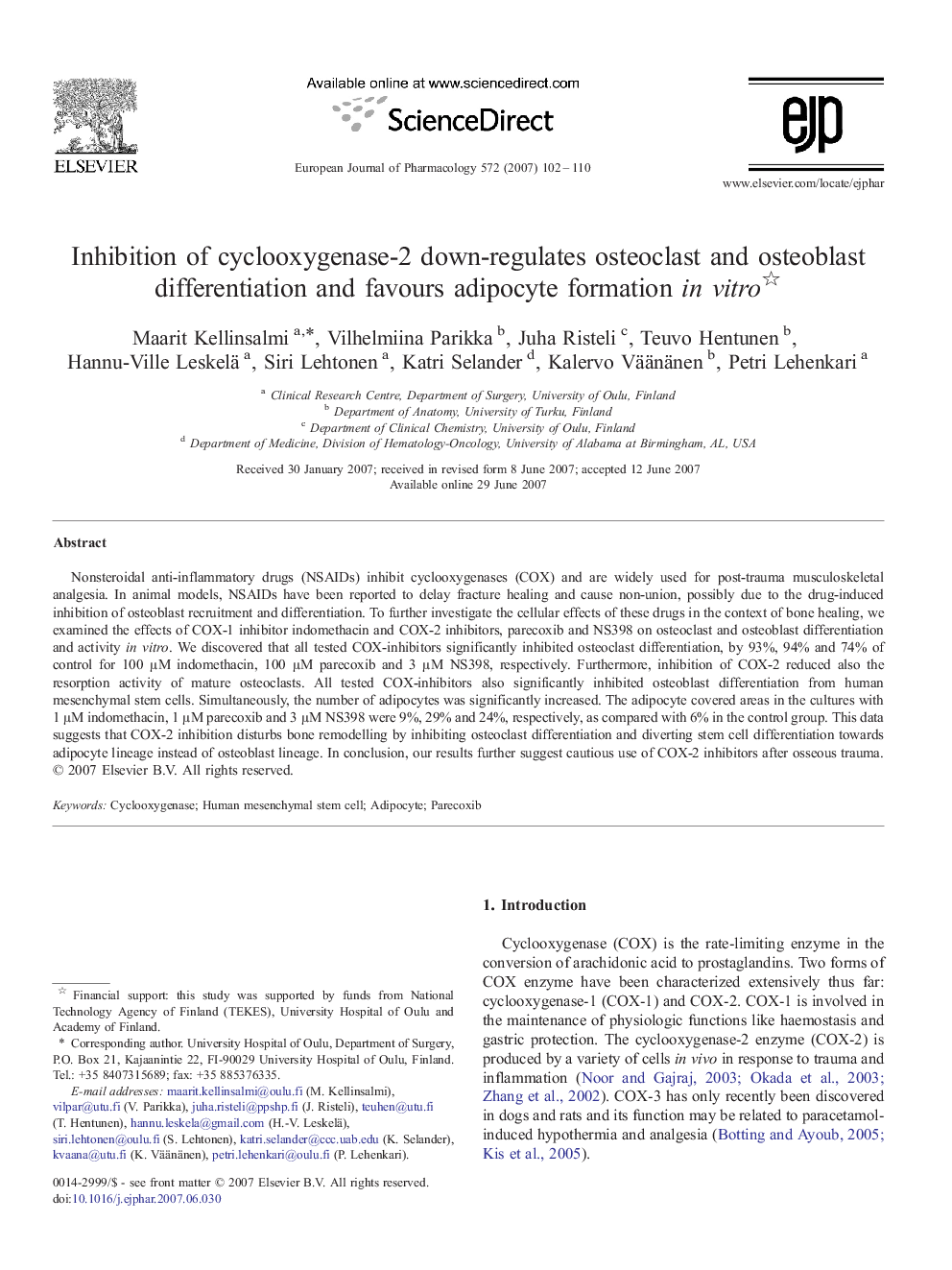| Article ID | Journal | Published Year | Pages | File Type |
|---|---|---|---|---|
| 2535765 | European Journal of Pharmacology | 2007 | 9 Pages |
Nonsteroidal anti-inflammatory drugs (NSAIDs) inhibit cyclooxygenases (COX) and are widely used for post-trauma musculoskeletal analgesia. In animal models, NSAIDs have been reported to delay fracture healing and cause non-union, possibly due to the drug-induced inhibition of osteoblast recruitment and differentiation. To further investigate the cellular effects of these drugs in the context of bone healing, we examined the effects of COX-1 inhibitor indomethacin and COX-2 inhibitors, parecoxib and NS398 on osteoclast and osteoblast differentiation and activity in vitro. We discovered that all tested COX-inhibitors significantly inhibited osteoclast differentiation, by 93%, 94% and 74% of control for 100 μM indomethacin, 100 μM parecoxib and 3 μM NS398, respectively. Furthermore, inhibition of COX-2 reduced also the resorption activity of mature osteoclasts. All tested COX-inhibitors also significantly inhibited osteoblast differentiation from human mesenchymal stem cells. Simultaneously, the number of adipocytes was significantly increased. The adipocyte covered areas in the cultures with 1 μM indomethacin, 1 μM parecoxib and 3 μM NS398 were 9%, 29% and 24%, respectively, as compared with 6% in the control group. This data suggests that COX-2 inhibition disturbs bone remodelling by inhibiting osteoclast differentiation and diverting stem cell differentiation towards adipocyte lineage instead of osteoblast lineage. In conclusion, our results further suggest cautious use of COX-2 inhibitors after osseous trauma.
